The Aberdeenshire town of Fraserburgh is a venerable 430 years old this year.
The Broch, population on the decline and currently standing at around 12,500, punches well above its weight in terms of its contribution to north-east history and heritage.
It’s a stronghold of the Scots language, with almost two-thirds of the population able to speak it.
It has a fishing heritage second to none, with one of the most important shellfish harbours in Europe.
It’s strong in golf and football. It might seem like the last place on earth to have a cricket club, but it does, and it will be 160 years old this year.
Broch notables
Famous sons are many and include the legendary Mitsubishi Company consultant, Thomas Blake Glover, internationally renowned fashion designer Bill Gibb, and one perhaps not to mention, serial killer Dennis Nilsen.
Less well known is the redoubtable aviator Marion Katherine Wilberforce (nee Ogilvie-Forbes) (1902–1995).
She flew Hurricanes, Spitfires and other aircraft for the Air Transport Auxiliary in WW2 and was one of only eleven women qualified to fly the four-engine Lancaster and Stirling bombers.
We searched through our archives for photos of the Broch
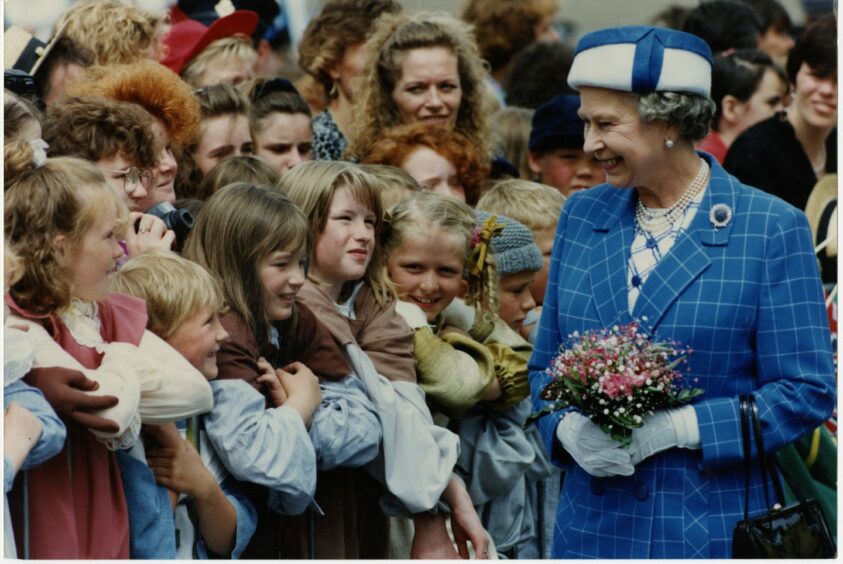
Here the Queen meets the thousands thronging the town centre during the Broch’s 400th anniversary celebrations in June 1992.
The Duke and Duchess of Kent were visitors in earlier decades, having strong connections to the RNLI.
In this picture, crowds turn out in 1954 to see the Duchess name the Fraserburgh lifeboat ‘Duchess of Kent’.
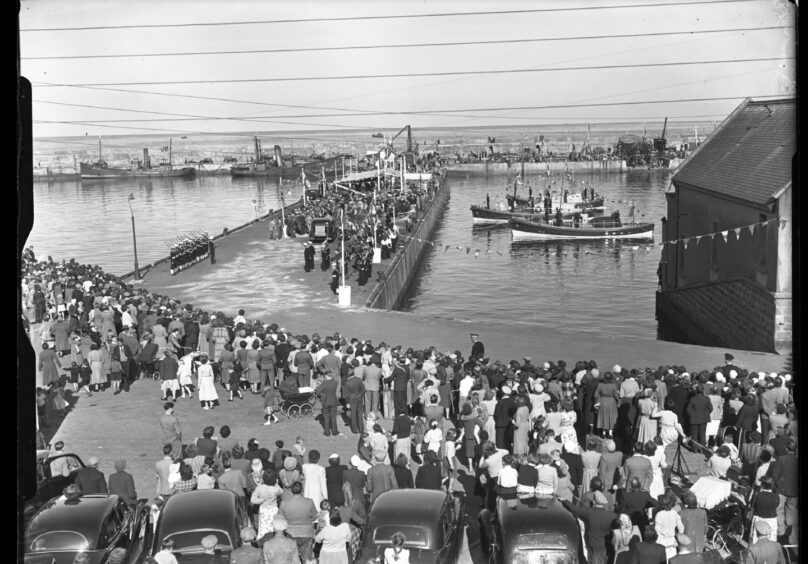
This was the ill-fated vessel which capsized in service with the loss of five lives on January 21, 1970.
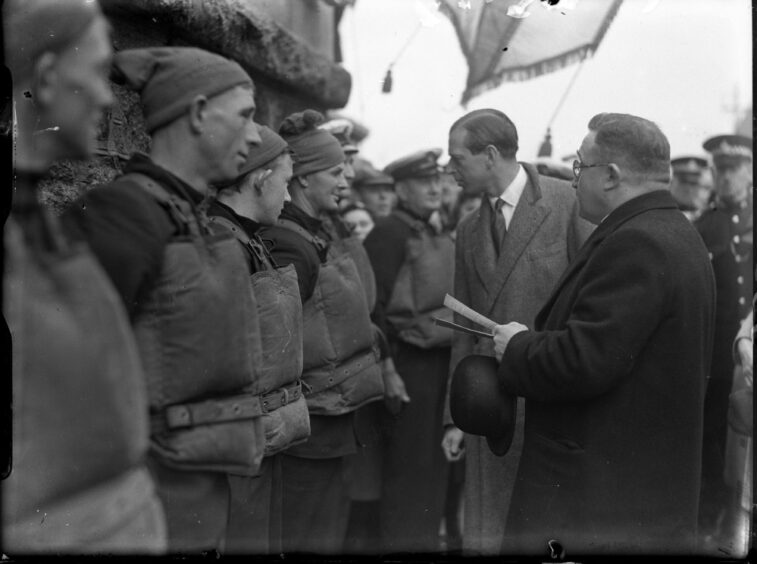
Prince George, Duke of Kent was president of RNLI before his death in 1942, when the role was passed to his wife.
In 1939 he became the first member of the Royal Family to visit Fraserburgh, pictured here meeting the crew of the lifeboat ‘John and Charles Kennedy’.
New lifeboat in 1986
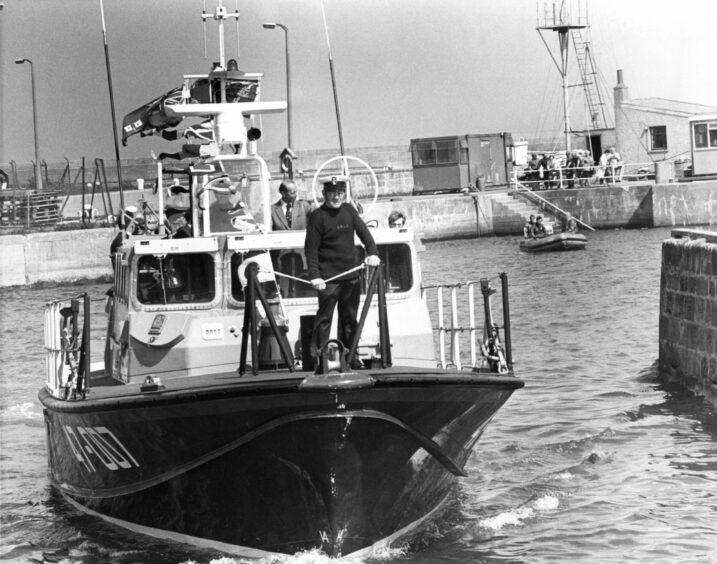
In 1986, the new lifeboat was ‘City of Edinburgh’, pictured here entering the harbour after taking Prince Edward, Duke of Kent, president of the RNLI since 1969, around the bay.
Fraserburgh at war
Fraserburgh was often in the line of German fire.
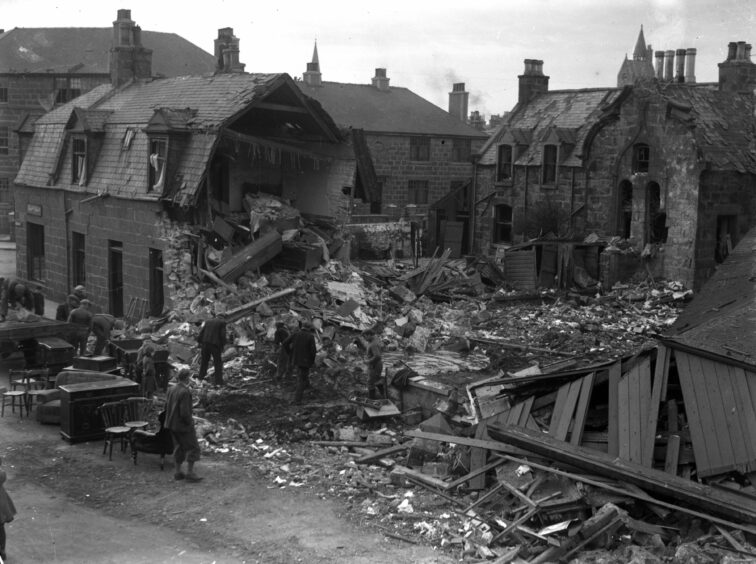
Here, in February 1943, residents salvage furniture from devastated houses in the Harbour Street/Cross Street area of the town.
The town changed little down the years
Here’s the High Street in 1982.
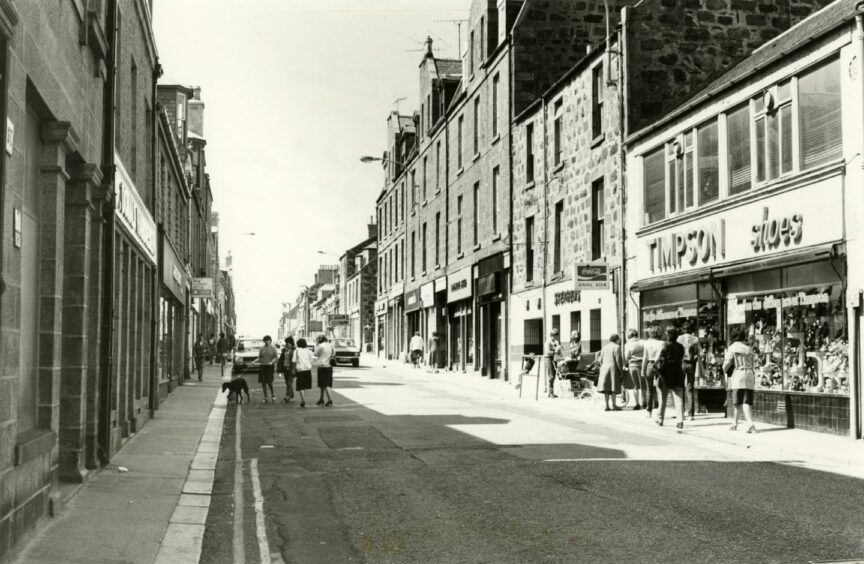
In 1973, Broad Street was traffic-packed and busy.
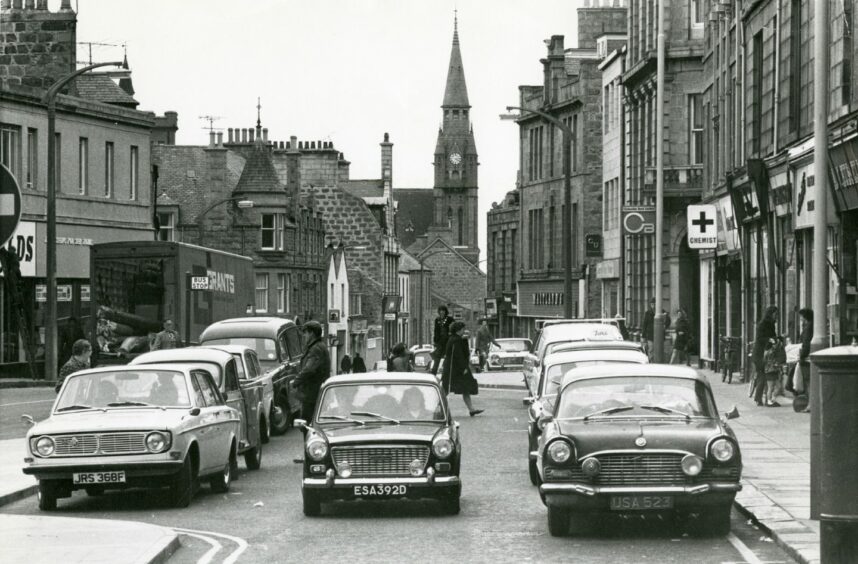
Toilet horror
But Saltoun Square gained notoriety in 1973 for the terrible state of its public toilets.
In a blistering attack, a visitor from North Uist described them as “disgusting, revolting, foul and filthy… the uninitiated visitor is confronted with discarded cans, paper bags, wrappers, cartons, newspapers and less savoury items including soiled tights and fly-infested faeces.”
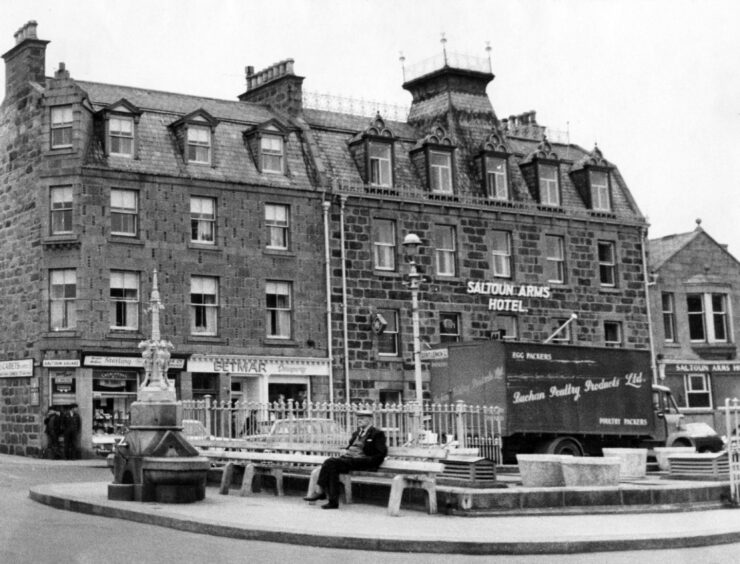
Fishing heritage
Fraserburgh harbour dates back to 1546, and is still home to a sizeable fishing fleet.
Herring brought the town prosperity and a booming population in the 19th century.
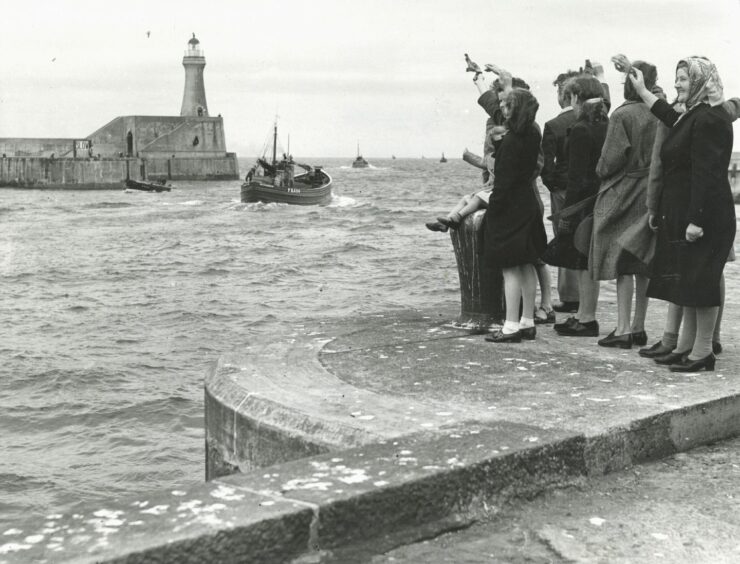
Here a small group of women gathers on Fraserburgh quay to wave goodbye to the herring fleet.
The year was 1949 – still the days of the great herring fishing.
As the boats ploughed south to Yarmouth, the herring gutters made their separate way down the coast.
There were two fisheries a year, one in the spring and one late in the year.
In those days small vessels could make a living from the herring. Later, fishing technology, pioneered by the Scandinavians, wiped out the stocks.
They introduced the huge purse seiners – dubbed hoovers – which could catch thousands of tons of fish in a single night.
The writing was on the wall for the nomadic progress of the North Sea herring fleet.
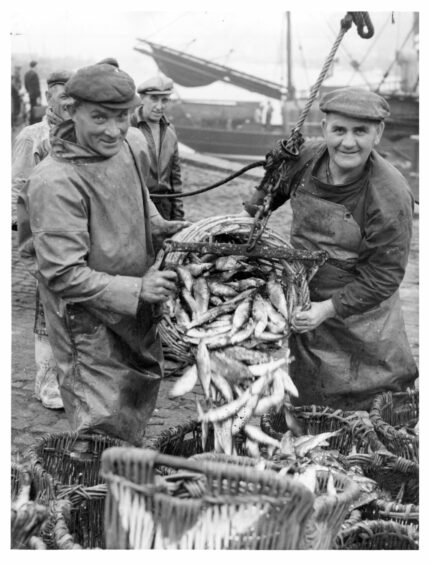
In this 1958 photo, John Ritchie and Innes Robertson of the Fraserburgh boat Xmas Morn have a twinkle in their eyes as they offload some of the boat’s latest shot of 55 crans at Great Yarmouth.
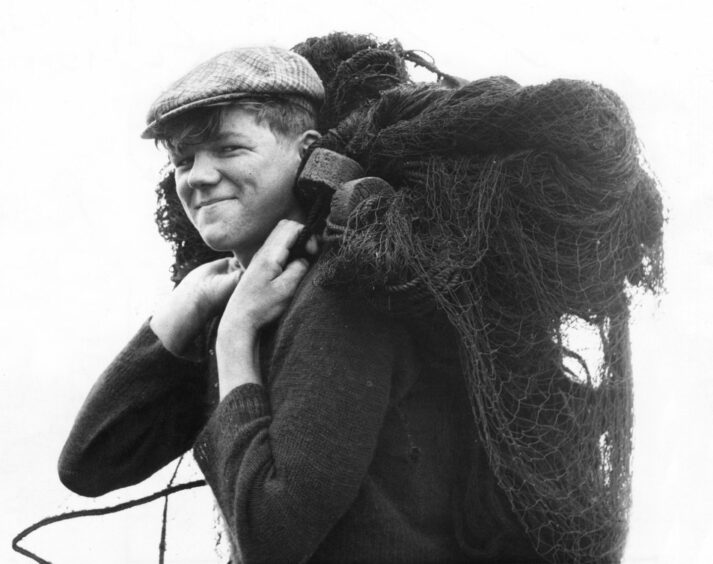
In the same year, Peter MacMillan of the Fraserburgh fishing boat Silver Spray also has a cheeky glint as he brings a net from the boat for drying.
The railway played a key role in the fishing industry
Fraserburgh station was the terminus of the Formartine and Buchan railway line from Aberdeen.
It opened in 1865 and closed to passengers a hundred years later, thanks to Beeching cuts.
Freight trains continued to operate to Fraserburgh until 1979 and the track was subsequently lifted.
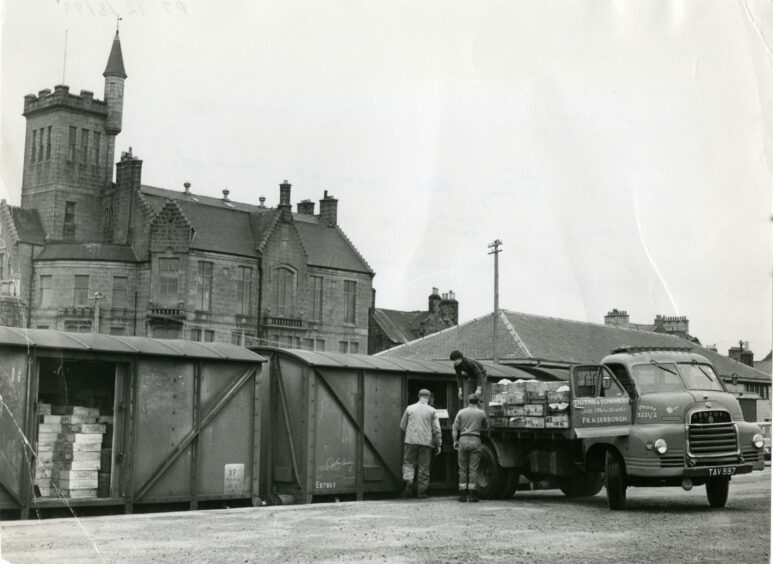
The railway goods yard, seen here in 1969 loading fish boxes, with the Dalrymple Hall in the background.
Royal rail arrival
In 1956, Fraserburgh hosted the society wedding of the year, attended by two Queens, ours, and Queen Ingrid of Denmark.
The bride was the Hon Flora Fraser, only daughter of Lord Saltoun, Superior of the ancient burgh of Fraserburgh, who was marrying Captain Alexander Ramsay, a great-grandson of Queen Victoria, at St Peter’s Episcopal Church
It was speculated that the two Queens might arrive at Fraserburgh station, and when they did they were met with ‘wildly-cheering crowds’ at the entrance.
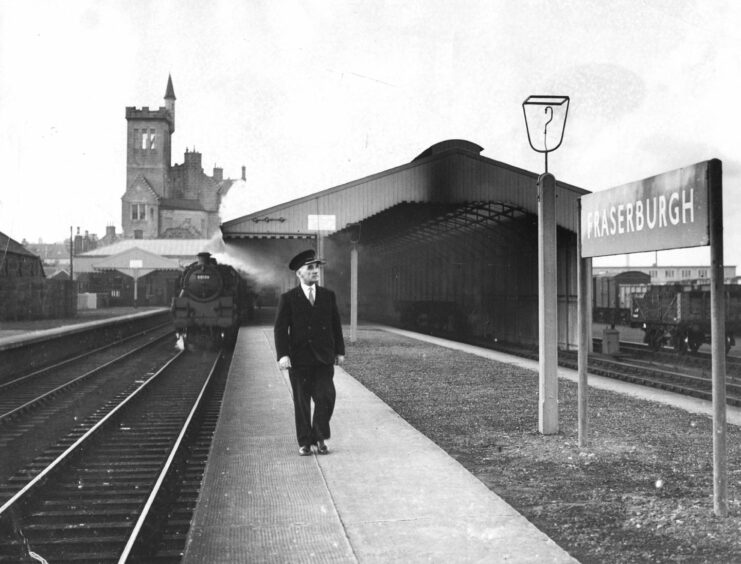
Fraserburgh station is seen here in October 1956.
Young chess masters in the making
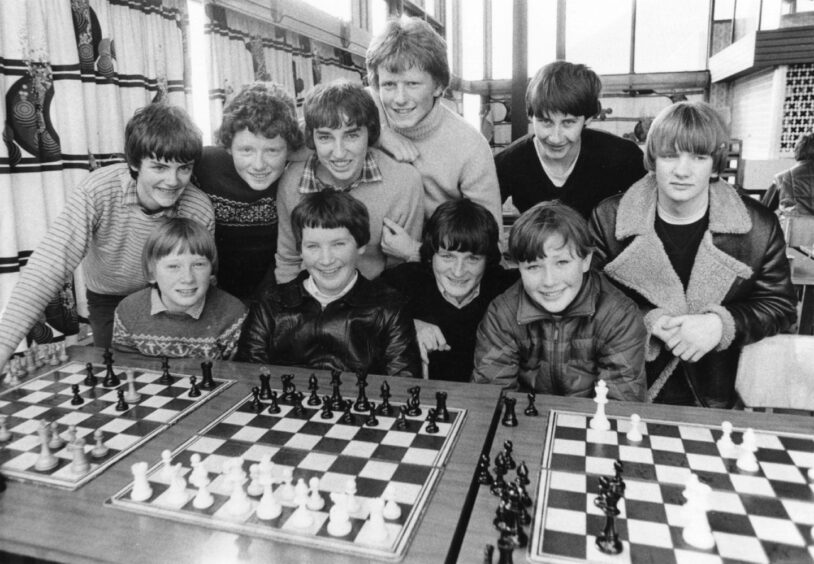
Confident smiles on the faces of these youngsters, pupils of Fraserburgh Academy and members of the school’s A and B teams, as they pose for the camera before settling down to do battle in 1983.
Fraserburgh v Celtic
The two football teams came together to pay their respects to community heroes three months after the Fraserburgh lifeboat tragedy of 1970.
The Duchess of Kent lifeboat overturned in a freak wave while aiding a Danish fishing vessel to safety.
Five men were lost, with a lasting impact on the town.
When news of the tragedy travelled south, legendary football manager Jock Stein was determined to honour the men.
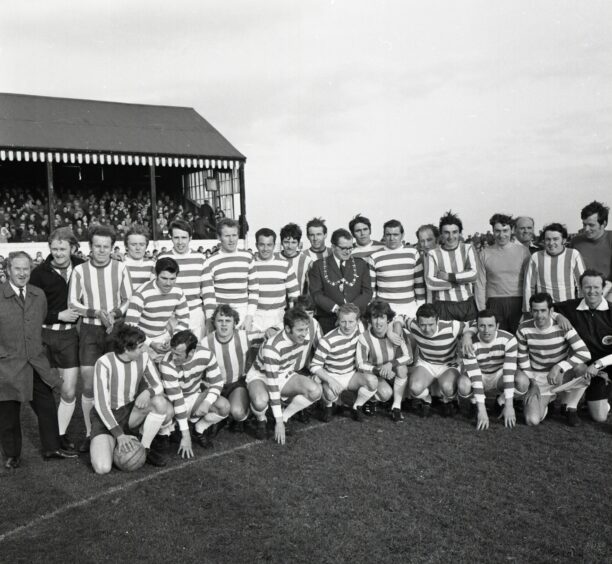
He brought with him a Celtic side littered with stars, including Billy McNeill, Jimmy Johnstone, Bobby Lennox, and Bobby Murdoch.
Despite the freezing, gale-force winds that day, 6,500 people attended the game at Bellslea to raise £2,000 for the disaster fund.
Speaking after the match, which Celtic won 7-0, Jock described the men of the RNLI as “heroes”.
The Broch’s 1980s skatebowl
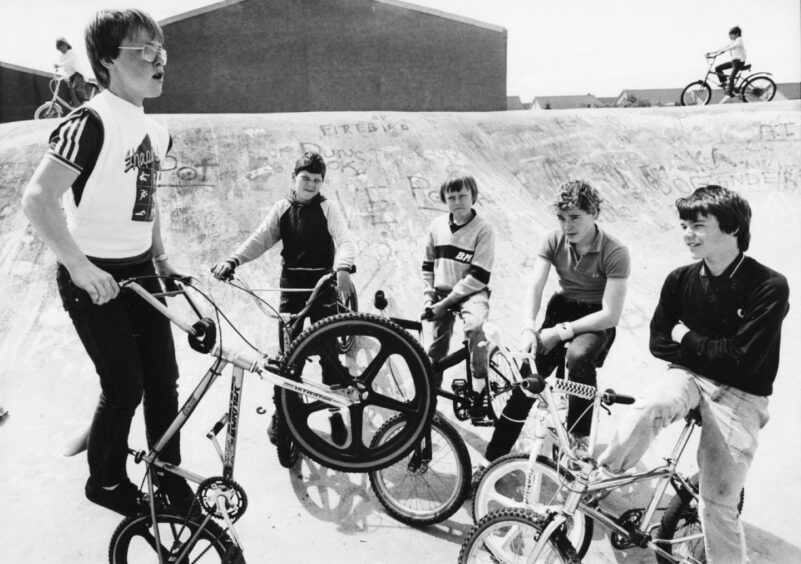
“They’re as good as they come at Fraserburgh when it comes to trick cycling on the BMX,” enthused the Evening Express in 1985. “And to prove it, Scott Buchan does a series of rear wheel bounces watched by his mates (left to right) Derek Bain, Robert Noble, Brian Connon and Michael Adams.”
Right on cue
The Fraserburgh British Legion team were competing in the Aberdeen Billiards and Snooker League in 1979
“These Broch lads have taken the C Division by storm,” reported the Evening Express. “They are undefeated after 12 games and have already won the title.
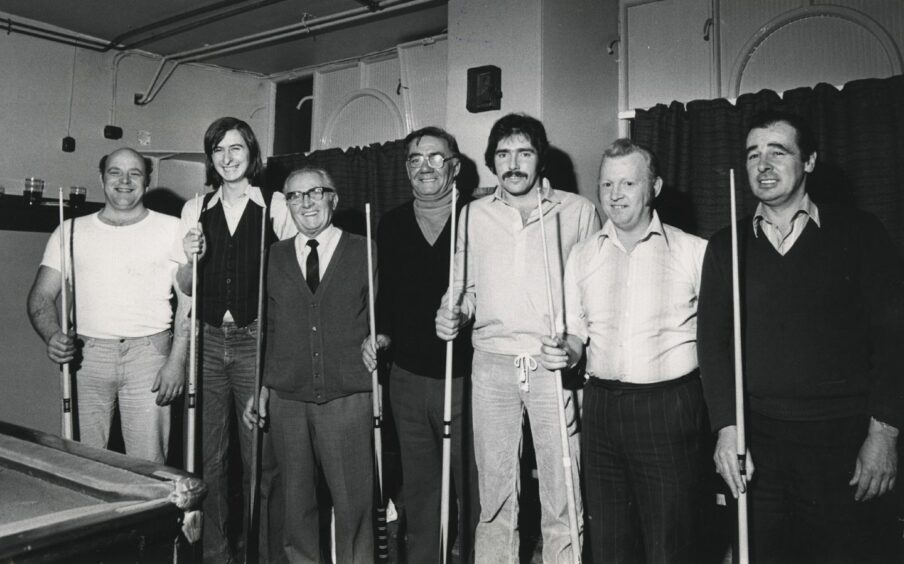
“Not bad considering the team play all their games, home and away, in Aberdeen.
“Our photographer got the team to line up before they went on to beat Stoneywood Mills 6-0 in a league match. In the picture (left to right) – Frank Donn, George Smith, Bert Marioni (vice captain), Don McKay (captain), Slessor Mutch, Alistair Thomson, David Smith.”
Despite its well-documented social problems, Fraserburgh is considered one of Scotland’s Hidden Treasures.
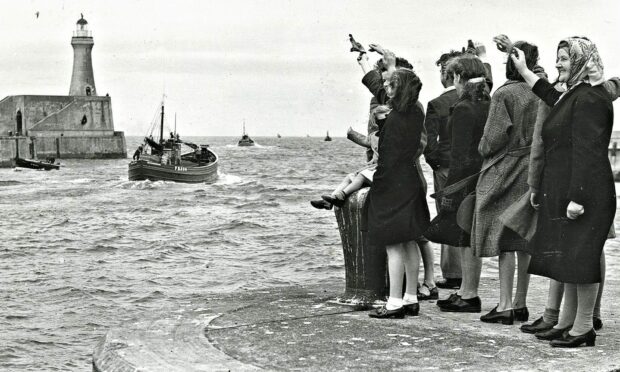










Conversation